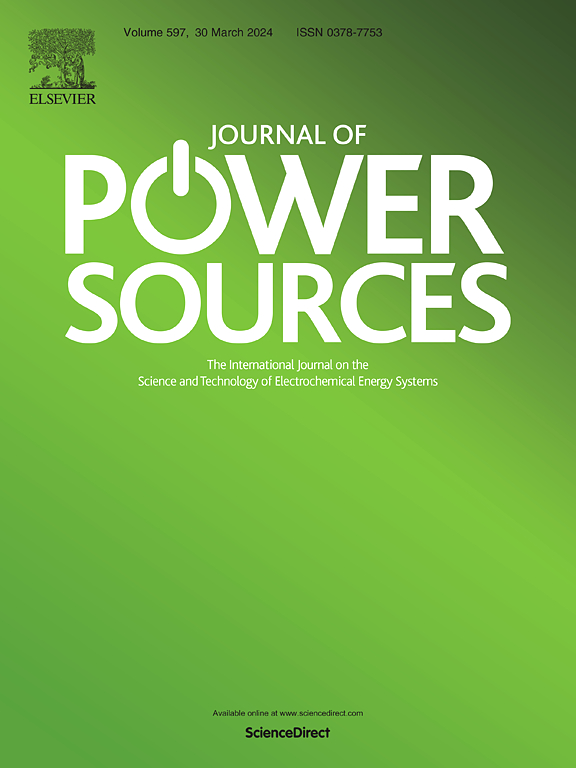Hybrid energy storage unit fed motoring and regenerative braking control of electric vehicle drivetrain
IF 8.1
2区 工程技术
Q1 CHEMISTRY, PHYSICAL
引用次数: 0
Abstract
Nowadays, adoption of supercapacitors (SC) as secondary power reservoir is a growing trend in electric vehicles (EVs). This paper delineates motoring and regenerative braking control of a hybrid energy storage unit (HESU) fed brushless direct current motor (BLDCM) based EV drivetrain. The topology comprises SC-battery with an inductor in series at input side to resist current transients in battery diverting to SC. As both exhibit limitations in terms of power and energy density respectively, the composite combination offers an optimized energy storage solution. SC helps in prolonging battery lifespan by managing frequent charging/discharging phenomenon. Additionally, SC contributes efficiently handling power during regenerative braking and acceleration phases. The regenerative braking capability of BLDCM is utilized to harness power and replenish the stored energy of battery/SC. The effectiveness of the EV drivetrain is verified through simulation in MATLAB/Simulink under different operating scenarios, showcasing its potential for low-voltage EVs during heavy traffic that requires frequent starts and stops or hilly terrain. Furthermore, a laboratory test-bed of the same architecture is developed to verify controller performance under different loading as well as speeds of BLDCM showcasing efficient operation. This research showcases immense potential as a future outlook for evolution of EV technology.
混合动力储能装置对电动汽车传动系统的驱动和再生制动进行控制
如今,电动汽车(EV)采用超级电容器(SC)作为辅助动力储存器的趋势日益明显。本文阐述了基于无刷直流电机(BLDCM)的电动汽车动力传动系统的混合储能装置(HESU)驱动和再生制动控制。拓扑结构包括蓄能器-电池,输入端串联一个电感器,以防止电池中的瞬态电流分流到蓄能器。由于二者分别在功率和能量密度方面表现出局限性,复合组合提供了一种优化的能量存储解决方案。通过管理频繁的充电/放电现象,SC 有助于延长电池的使用寿命。此外,SC 还能在再生制动和加速阶段有效地处理电能。BLDCM 的再生制动能力可用于利用电力和补充电池/SC 的存储能量。通过在 MATLAB/Simulink 中进行仿真,验证了电动汽车动力传动系统在不同运行场景下的有效性,展示了其在需要频繁起停的繁忙交通或丘陵地形中用于低压电动汽车的潜力。此外,还开发了相同架构的实验室测试平台,以验证控制器在不同负载和 BLDCM 速度下的性能,从而展示其高效运行。这项研究展示了电动汽车技术未来发展的巨大潜力。
本文章由计算机程序翻译,如有差异,请以英文原文为准。
求助全文
约1分钟内获得全文
求助全文
来源期刊

Journal of Power Sources
工程技术-电化学
CiteScore
16.40
自引率
6.50%
发文量
1249
审稿时长
36 days
期刊介绍:
The Journal of Power Sources is a publication catering to researchers and technologists interested in various aspects of the science, technology, and applications of electrochemical power sources. It covers original research and reviews on primary and secondary batteries, fuel cells, supercapacitors, and photo-electrochemical cells.
Topics considered include the research, development and applications of nanomaterials and novel componentry for these devices. Examples of applications of these electrochemical power sources include:
• Portable electronics
• Electric and Hybrid Electric Vehicles
• Uninterruptible Power Supply (UPS) systems
• Storage of renewable energy
• Satellites and deep space probes
• Boats and ships, drones and aircrafts
• Wearable energy storage systems
 求助内容:
求助内容: 应助结果提醒方式:
应助结果提醒方式:


